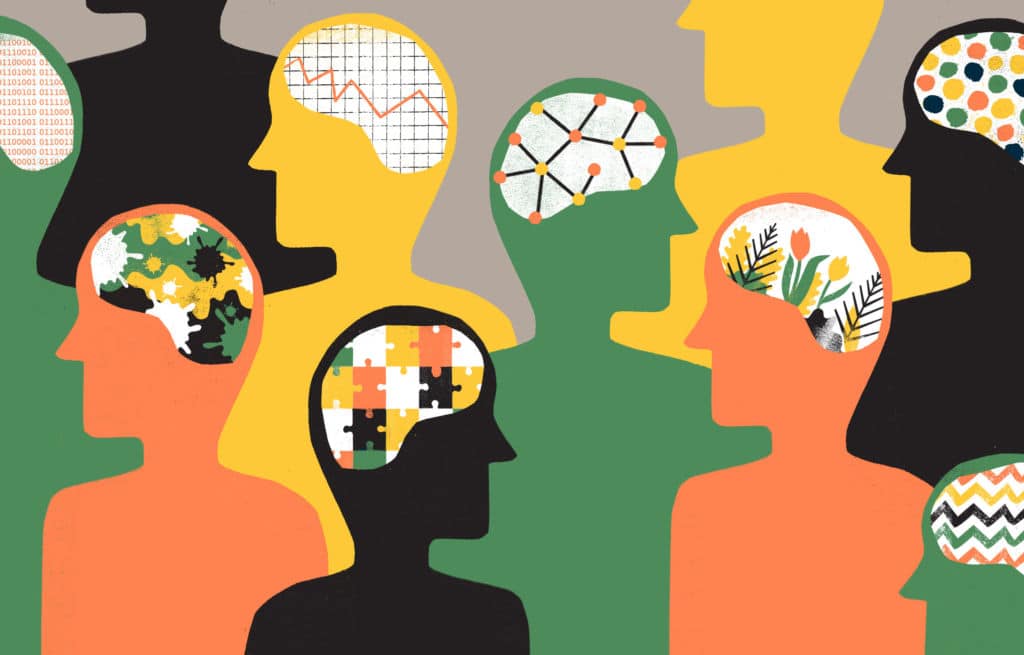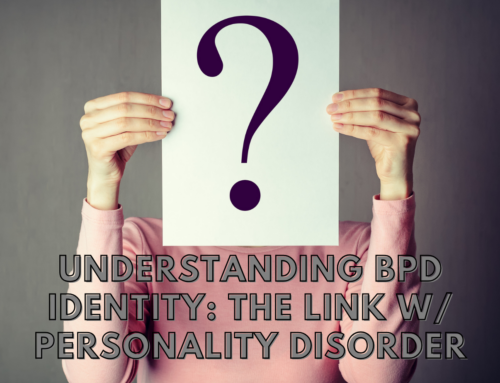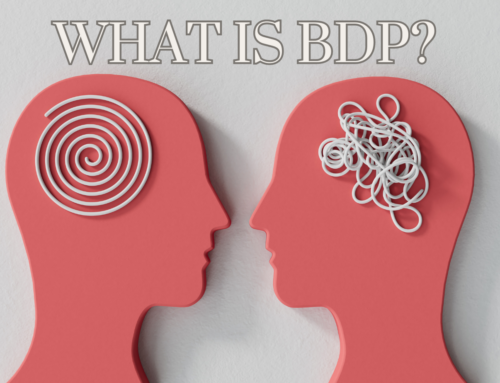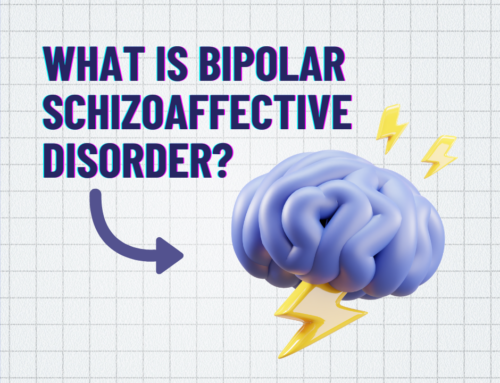Approximately one in five adults in the United States experiences symptoms of mental illness. Many of these mental disorders have similar characteristics, making it challenging to receive a proper diagnosis. When comparing schizoaffective disorder vs. bipolar disorder, it’s essential to look at the qualities that are both similar and distinctive. By comparing the two disorders, individuals looking for answers and treatment options can get the help they need.
A Quick Overview of Schizoaffective Disorder and Bipolar Disorder
Schizoaffective disorder and bipolar disorder are similar in features and symptoms. It can often be challenging for medical professionals to distinguish between the two without a complete study of the individual.
Bipolar Disorder
Bipolar disorder is a mental health condition characterized by episodes of intense highs and incapacitating lows. During diagnosis, a psychotherapist will look for a history of at least one manic episode and a series of depressive episodes. These mood episodes can develop gradually over several days or instantly through a specific trigger or event. They may last for a few days or several weeks.
There are three categories of bipolar disorder: bipolar I, bipolar II and cyclothymic disorder.
- Bipolar I. Bipolar I is characterized by a manic episode with symptoms that last at least a week or more. These symptoms may include a decreased need for sleep, speaking fast, racing thoughts, restless behavior and increased risky behaviors. The symptoms may be so severe that the individual needs to be hospitalized.
- Bipolar II. With bipolar II, an individual will experience at least one manic episode and one major depressive episode. Between episodes, an individual may resume normal functioning. Those diagnosed with bipolar II usually seek treatment for depression, but sometimes the depressive episode is so severe it’s unresponsive to medications.
- Cyclothymic disorder. Those with cyclothymic disorder experience ongoing manic and depressive episodes, but these episodes aren’t as severe as those with bipolar I and bipolar II disorders. These episodes occur on and off for at least two years and typically occur at least half the time during this period.
Schizoaffective Disorder
Schizoaffective disorder is characterized by intense mood swings coupled with delusions, strong beliefs about things that aren’t real and hallucinations, such as hearing voices. Individuals with schizoaffective disorder are often misdiagnosed as having schizophrenia or bipolar disorder. However, the most significant difference is that hallucinations and delusions occur with or without mood swings. Substance abuse often puts a person at a greater risk for this type of mental illness.
Individuals with schizoaffective disorder often display disorganized behaviors and may appear uncaring or unresponsive to life events. They may not care about their appearance, work, relationships and hobbies.
Individuals with schizoaffective disorder may also display problems with speech and communication and the inability to answer questions thoroughly. Additionally, they may have issues relating to others at work or school and have problems completing tasks. This mental disorder typically begins in the late teens or early adulthood, between the ages of 16 and 30, and tends to occur more often in women than in men.

How Are Schizoaffective Disorder and Bipolar Disorder the Same?
Schizoaffective disorder and bipolar disorder share several common characteristics, making diagnosing the conditions challenging. A complete exam by a mental health professional is required for a definitive diagnosis. Some of the overlapping symptoms include:
- Depression. Major depression is often a common symptom of various mental disorders. Major depressive episodes are typically long-lasting. Still, those with schizoaffective disorders and bipolar disorders may find it challenging to enjoy hobbies and interests that once provided happiness. Difficulty concentrating and an inability to make concrete decisions is another common trait.
- Manic episodes. Schizoaffective disorder and bipolar disorder can make it difficult to organize their thoughts and focus on any task. An individual may feel jumpy or wired or have an increased energy level. These physical symptoms and extreme agitation can interfere with work, school and home life.
- Psychosis – Psychosis is often referred to as a psychotic episode. Psychotic features include hallucinations and delusions or disturbed thoughts and confusion.
How Do Schizoaffective Disorder and Bipolar Disorder Differ?
While both conditions can cause psychotic symptoms, those with schizoaffective disorder are much more likely to have psychotic features than those with bipolar disorder. People with bipolar disorder with psychotic episodes are also more likely to experience feelings of paranoia and have feelings of superiority. In contrast, those with schizoaffective disorder tend to experience symptoms of catatonia and have difficulty expressing their emotions. One of the main differences between the two conditions is that with bipolar disorder, many of these symptoms only appear during a mood episode, while for those with schizoaffective disorder, the symptoms remain present even after moods improve.
What Causes a Mental Health Disorder?
Research has shown there’s no one cause for mental health disorders. Mental illness can be caused by a variety of events and factors, including:
- Childhood trauma
- Ongoing chronic illness
- Substance abuse
- Solitude and isolation
- Genetic makeup
- Problems during fetal development

Genetics
Genetic factors can contribute to mental disorders, and studies have shown some conditions tend to run in families including bipolar disorder and schizophrenia. There currently aren’t any genetic tests to determine if an individual will develop a mental illness. Instead, psychologists tend to look at other family members to understand the genetic risk. It should be noted, however, that individuals with some mental illnesses show variances in chromosomes 3 and 10, though it’s unknown how these chromosomes influence mental disorders.
Environment
Certain environmental conditions can affect how a person thinks and feels and their overall health and well-being. For example, poor nutrition affects the brain’s ability to function as it should and prevents the body from operating at its peak performance. An individual with poor nutrition may not be able to cope with stress as well as someone in top physical condition. Both physical and social environmental factors may contribute to an individual’s mental health. These include:
- Lack of sleep
- Drug and alcohol use
- Smoking
- Poor work conditions
- Climate
- Family environment
- Relationships
- Financial situation

Biology
According to the American Psychological Association, all mental processes are brain processes. Therefore, all disorders of mental functioning are biological diseases. Factors such as prenatal development, maternal stress and birth complications have all been linked to mental illness — all biological factors. Biochemical factors such as low dopamine and serotonin levels can lead to mood symptoms such as depression or anxiety.
What Type of Treatment Is Most Common for Schizoaffective Disorder and Bipolar Disorder?
There’s no cure for schizoaffective disorder and bipolar disorder. However, effective treatment options are available that make the conditions manageable. A proper diagnosis is the first step to receiving treatment. After the diagnosis, treatment typically involves combining individual treatment and medication.
Individualized Treatment
Psychotherapy (talk therapy), cognitive behavioral therapy, family counseling and extended care play an important role in individual therapy for those with mental disorders.
At Alta Loma, we offer a residential care plan where patients are stabilized upon arrival. We provide a supportive living environment and teach residents life skills and healthy habits to help them control their condition. Methods used include cognitive behavioral therapy, individual or group sessions with a therapist and family counseling to help loved ones learn about the mood disorder and how to provide support.
Long-Term Mental Health Treatment
Long-term mental health treatment for schizoaffective disorder and bipolar disorder typically involves medications, which may include one or more antidepressants, antipsychotic medications, mood stabilizers or antianxiety medications.
Why Treatment Is Imperative
Both schizoaffective disorder and bipolar disorder can have a lasting impact on your daily life. These mental illnesses can negatively affect your personal and professional relationships when left untreated. You may develop poor sleep habits and chronic health conditions. It may also lead to self-destructive behaviors and thoughts of suicide. Fortunately, treatment can reduce mood episodes, improve your mental health, and make life’s problems easier to manage.
Texas’ Leading Mental Health Treatment Program for Schizoaffective Disorder and Bipolar Disorder
Whether you’ve been diagnosed with bipolar affective disorder, schizoaffective disorder or another mental illness, or even if you haven’t yet been assessed by a medical professional, you can contact our specialists at Alta Loma for help. Our caring team of professionals can help you discover the best care plan to suit your condition. To learn more, contact us to get started today.



